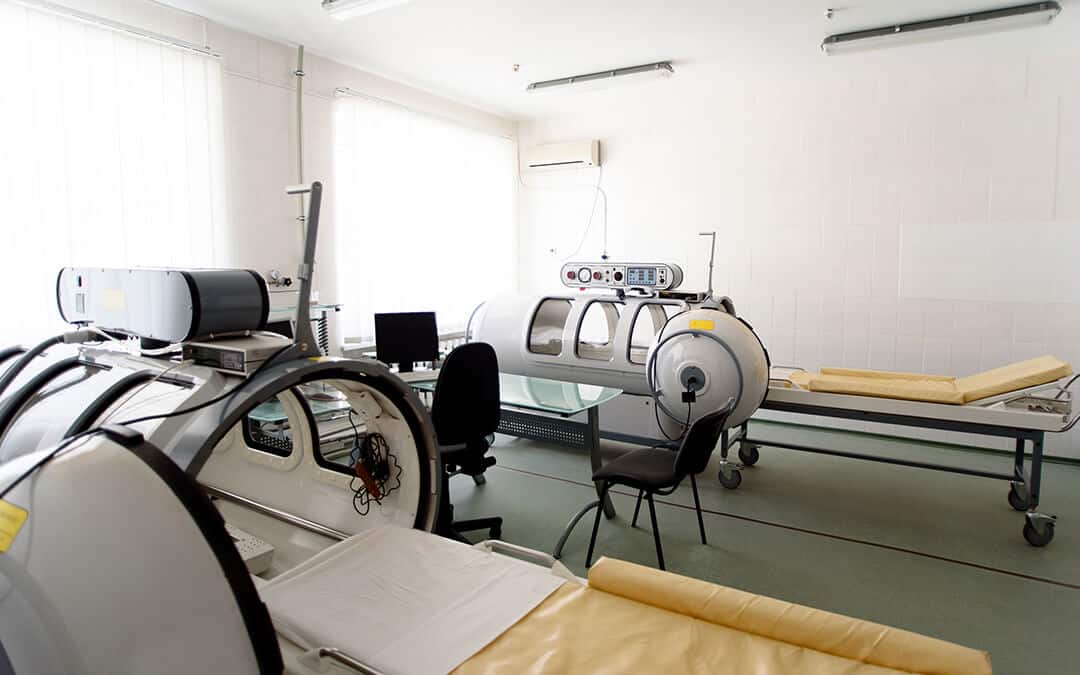Did you know that the first bone marrow1 transplant was successfully completed in a dog? Human bone marrow transplant protocols were first developed from canine research2 in the 1970s. Veterinary medicine has contributed positively to advancements in human medicine. Likewise, discoveries in human medicine propel veterinary medicine forward. Some human medications are being used to treat conditions like cancer and heart disease in pets.
German physician Rudolph Virchow, famously stated3: “Between animal and human medicine there are no dividing lines—nor should there be.” He said that while objectives in animal and human medicine might differ, the two together form the basis of all medicine.

Enter Hyperbaric Oxygen Therapy
Recently, veterinarian medicine has incorporated hyperbaric oxygen therapy (HBOT) into routine practice. What was previously considered untreatable can now be seen with hope.
What Is Hyperbaric Oxygen Therapy?
HBOT occurs in a pressurized room or tube where a patient breathes pure oxygen. In humans, hyperbaric oxygen therapy has a long history of treating decompression sickness caused by scuba diving. It can also treat burns, carbon monoxide poisoning, and gangrene. Wounds caused by diabetes or radiation injury that won’t heal are also helped with hyperbaric oxygen therapy. It is well tolerated with few side effects.
In the chamber where therapy occurs, air pressure is between 1.5 to 3 times higher than normal air pressure. This means that the lungs can gather much more oxygen than would be possible at normal air pressure.

How Does It Work?
An animal is gently placed within the airtight chamber. Generally, animals are calm and unaware that anything is out of the ordinary. Some even fall asleep.
The airtight chamber is equipped with oxygen tanks and pressure tubes. Veterinarians then monitor both the oxygen and pressure levels of the chamber. The animal’s temperature is also carefully monitored to ensure that oxygen toxicity does not occur. Treatments typically last for one or two hours. Often they are performed twice daily over the course of several days.
Why Is It Effective?
Hyperbaric oxygen therapy works in three different ways:
1. Increases Blood Oxygenation
Blood carries oxygen throughout the body. The elevated pressure increases the amount of oxygen in the blood. HBOT reduces swelling and floods body tissues with oxygen, also preventing tissue death.
2. Strengthens the Immune Response and Fights Bacteria
Increased oxygenation of tissues means they can more effectively fight infection. With this therapy, white blood cells increase in their ability to fight invaders. The oxygen also enables the body to fight bacteria by disabling their toxins.
3. Encourages Formation of New Cells
HBOT encourages the formation of new blood vessels. This, in turn, encourages the formation of collagen, a type of connective tissue, new skin cells, and even stem cells. All of this can speed the healing process.
When Is Hyperbaric Oxygen Therapy Used?
Pets with varying conditions can benefit from this treatment. Some examples of situations and conditions where oxygen therapy is helpful are:
- Anemia
- Arthritis
- Carbon monoxide poisoning
- Wounds that are not healing, particularly those that involve a compromised blood supply
- Swelling — post-operative, following burns or snake bites
- Trauma — to the spinal cord, head, or internal organs
Learn more about CalOx’s oxygen gas for veterinary care, or contact us today.
